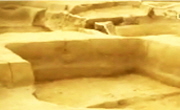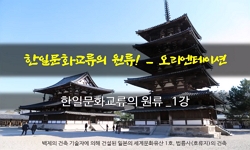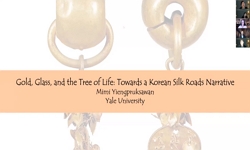사비기 백제 瓦窯는 소성실과 연도부의 구조변화에 따라 平窯와 登窯로 분류하여 Ⅰ~Ⅳ의 4단계로 설정할 수 있다. 平窯의 경우 Ⅰ단계의 가마는 6세기 중반에 조영되고, 배연구와 굴뚝이 각...
http://chineseinput.net/에서 pinyin(병음)방식으로 중국어를 변환할 수 있습니다.
변환된 중국어를 복사하여 사용하시면 됩니다.
- 中文 을 입력하시려면 zhongwen을 입력하시고 space를누르시면됩니다.
- 北京 을 입력하시려면 beijing을 입력하시고 space를 누르시면 됩니다.

사비기 백제 와요(瓦窯)의 구조변화 연구 -소성실(燒成室)과 연도부(煙道部)를 중심으로- = A Study on the Structural Change of Roof-Tile Klin in the Sabi Period, Baekje
한글로보기https://www.riss.kr/link?id=A82399281
- 저자
- 발행기관
- 학술지명
- 권호사항
-
발행연도
2010
-
작성언어
Korean
-
주제어
사비기 ; 백제 ; 기와가마 ; 정암리 ; 왕흥사지 ; 왕진리 ; Sabi Period ; Baekje ; Roof-Tile Klin ; Jeongam-ri ; Wangheungsagi ; Wangjin-ri
-
KDC
911
-
등재정보
KCI등재
-
자료형태
학술저널
-
수록면
87-121(35쪽)
- DOI식별코드
- 제공처
- 소장기관
-
0
상세조회 -
0
다운로드
부가정보
국문 초록 (Abstract)
사비기 백제 瓦窯는 소성실과 연도부의 구조변화에 따라 平窯와 登窯로 분류하여 Ⅰ~Ⅳ의 4단계로 설정할 수 있다. 平窯의 경우 Ⅰ단계의 가마는 6세기 중반에 조영되고, 배연구와 굴뚝이 각각 2개씩 구축되며, Ⅱ단계의 가마는 6세기 중후반에 조영되고, 배연구와 굴뚝이 각각 3개씩 구축된다. Ⅲ단계의 가마는 6세기 후반에 조영된 것으로 판단되는데, 배연구와 굴뚝이 각각 3개씩 구축된 구조와 함께 석재를 이용해 4줄 고래를 갖춘 구들식의 소성실로 배연구 3개, 굴뚝 2개가 구축된 가마도 나타난다. Ⅳ단계의 가마는 6세기 말에서 7세기 초반에 조영되고, 소성실에 3행×4열의 토대가 구축되어 있으며, 배연구 3개, 굴뚝 1개가 구축되어 있다. 登窯의 경우에는 가장 이른 단계인 Ⅰ단계의 가마는 6세기 후반에 조영되었고, 소성실 면적이 3.3~4.2㎡으로 무계단식이다. Ⅱ단계의 가마는 6세기 후반에서 말기에 조영되었고, 소성실의 면적은 4.7~4.9㎡이며, 무계단식과 유계단식이 모두 나타난다. Ⅲ단계의 가마는 6세기 말에서 7세기 초에 조영된 것으로 보이고, 소성실의 면적은 5.6~6.8㎡로 유계단식이 우세한 양상이다. Ⅳ단계의 가마는 7세기 전반에서 7세기 중반에 조영된 것으로 보이는데, 사비도성과 백마강을 중심으로 위치하던 가마터들이 사비도성으로부터 먼 지역에도 축조되고 있는 양상을 띤다. 이 단계의 가마는 유계단식으로 구축되어 있다.
다국어 초록 (Multilingual Abstract)
considering the chronology of plane kilns during the Sabi Period, Paekje, while Jeongam-ri A-1 is considered as the earliest stage I, the kiln is estimated to be built in the middle of the 6th century. The kilns at Jeongam-ri B-2ho· 3ho are the stage...
considering the chronology of plane kilns during the Sabi Period, Paekje, while Jeongam-ri A-1 is considered as the earliest stage I, the kiln is estimated to be built in the middle of the 6th century. The kilns at Jeongam-ri B-2ho· 3ho are the stage II and those kilns are estimated to be built in the middle or latter of the 6th century. In addition, Jeongam-ri B-5,6 and Wangheungsagi 3rd kiln are considered as the stage III and the kiln was estimated to be built in the latter of the 6th century, 577 in an excellent composition of Sarigi, Moktapji. Wangjin-ri 4 ho is the stage IV, the kiln is estimated in the latter of the 6th century and the early of the 7th century. Based on the results of examining the chronology of plane kilns during the Sabi Period, the kiln sites at Wangheungsaji 6, 9, and 10 ho are considered as the stage I, the earliest stage and they were built in the latter of the 6 century. And then, in the stage II, the kiln of Wangheungsagi 2 ho, the kiln of Jeongam-ri B-9 ho, and the kilns of Jeongam-ri 5, 8 ho are estimated to be built in the latter of the 6th century. Wangheungsagi 5 ho kiln, 8 ho kiln, Gwanhyen-ri kiln, and Wangjin-ri 3 ho kiln are the stage III and are estimated to be built in the latter of the 6th century and the early of the 7th century. On the other hand, in the early or middle of the 7th century, considered as the stage IV, Walpyeong-dong kiln site, Punggi-dong kiln site and Wolgye-ri kiln site are considered to belong to this period.
동일학술지(권/호) 다른 논문
-
- 공주대학교 백제문화연구소
- 임영진
- 2010
- KCI등재
-
- 공주대학교 백제문화연구소
- 곽장근 ( Chang Keun Kwak )
- 2010
- KCI등재
-
고고학자료(考古學資料)를 통한 백제(百濟) 사비천도(泗비遷都)의 재인식(再認識)
- 공주대학교 백제문화연구소
- 이남석 ( Nam Seok Lee )
- 2010
- KCI등재
-
동아시아 불교조각을 통해 본 백제미륵사(百濟彌勒寺)의 불상(佛像)
- 공주대학교 백제문화연구소
- 최성은 ( Song Eun Choe )
- 2010
- KCI등재




 KCI
KCI KISS
KISS







